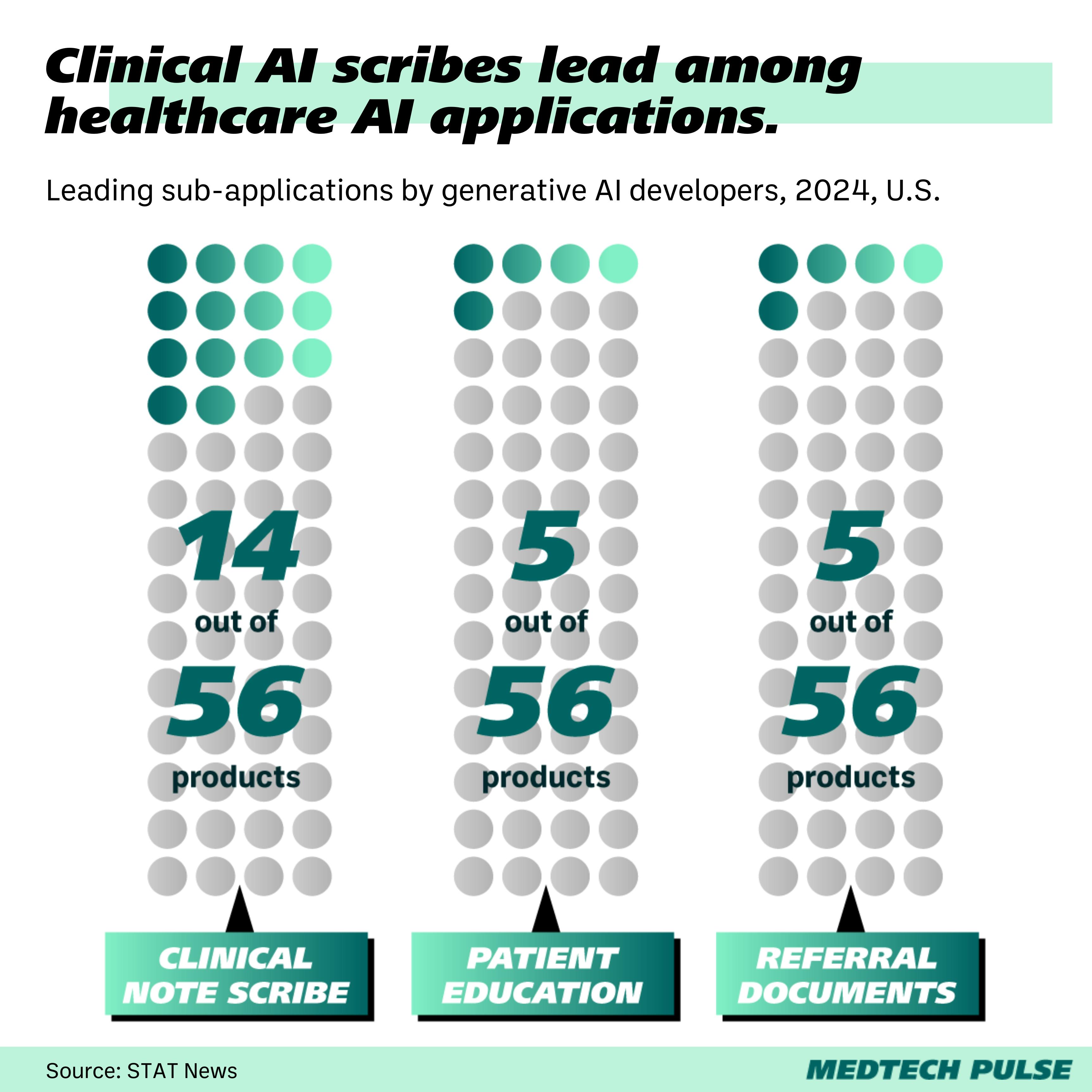The race for the best ambient scribe
Among generative AI applications in clinical medicine, there’s one that’s garnering attention more than others. Soon, across the U.S., human scribes may meet their match.
AI scribes are taking off. And healthcare systems want to make sure they have the best one.
The resulting head-to-head pilots of top products are being called healthcare’s ‘Pepsi challenge’ by STAT.
How does this look?: Around 90 health systems across the U.S. are currently experimenting with so-called ambient scribes.
- The involved health systems range from small virtual-only clinics to large federally-qualified health centers (FQHCs).
- Many are large research institutions, some of which are developing their own generative AI tools.
However, reporting shows that while many health institutions are examining this technology, fewer are implementing it system-wide.
AI clinical assistant Suki’s chief revenue officer told STAT: At a recent conference, a moderator asked the audience of health system leaders how many of them were experimenting with ambient technology.
“Everybody’s hand went up,” said Maus. Then they asked how many had at least half their doctors using the technology. “Not one hand was up.”
So, who is developing ambient scribes?: Dozens of companies are working on ambient scribes, but the companies in contention for implementation across U.S. health systems mostly come down to these big players:
- Microsoft: After acquiring Nuance, the company has deployed its Epic-integrated Dragon Ambient eXperience Copilot across over 150 provider systems in the U.S.
- Nabla: The company’s ambient scribe Copilot product rolled out last year across Kaiser Permanente facilities in Northern California.
- Abridge: The startup’s Epic-partnered AI medical scribe product has now launched across Kaiser’s 40-hospital system.
So far, the hype is strong. AI scribes are far outpacing other applications of clinical generative AI.

Potential pitfalls: Last year, we discussed concerns with AI scribes, namely the question of accuracy. How are we doing with those concerns now?
- In 2023, a study of this technology had found that AI scribes often missed subtleties of human speech, such as the non-lexical ‘mhm’s inherent to a real-world human conversation.
- As of last year, even Microsoft’s Nuance required human assistance to get these elements right.
- For the AI scribes in testing today, human doctors are still signing off on AI scribe-generated notes. Time will tell how these accuracy concerns play out as we get more trusting of this technology—for better or worse.